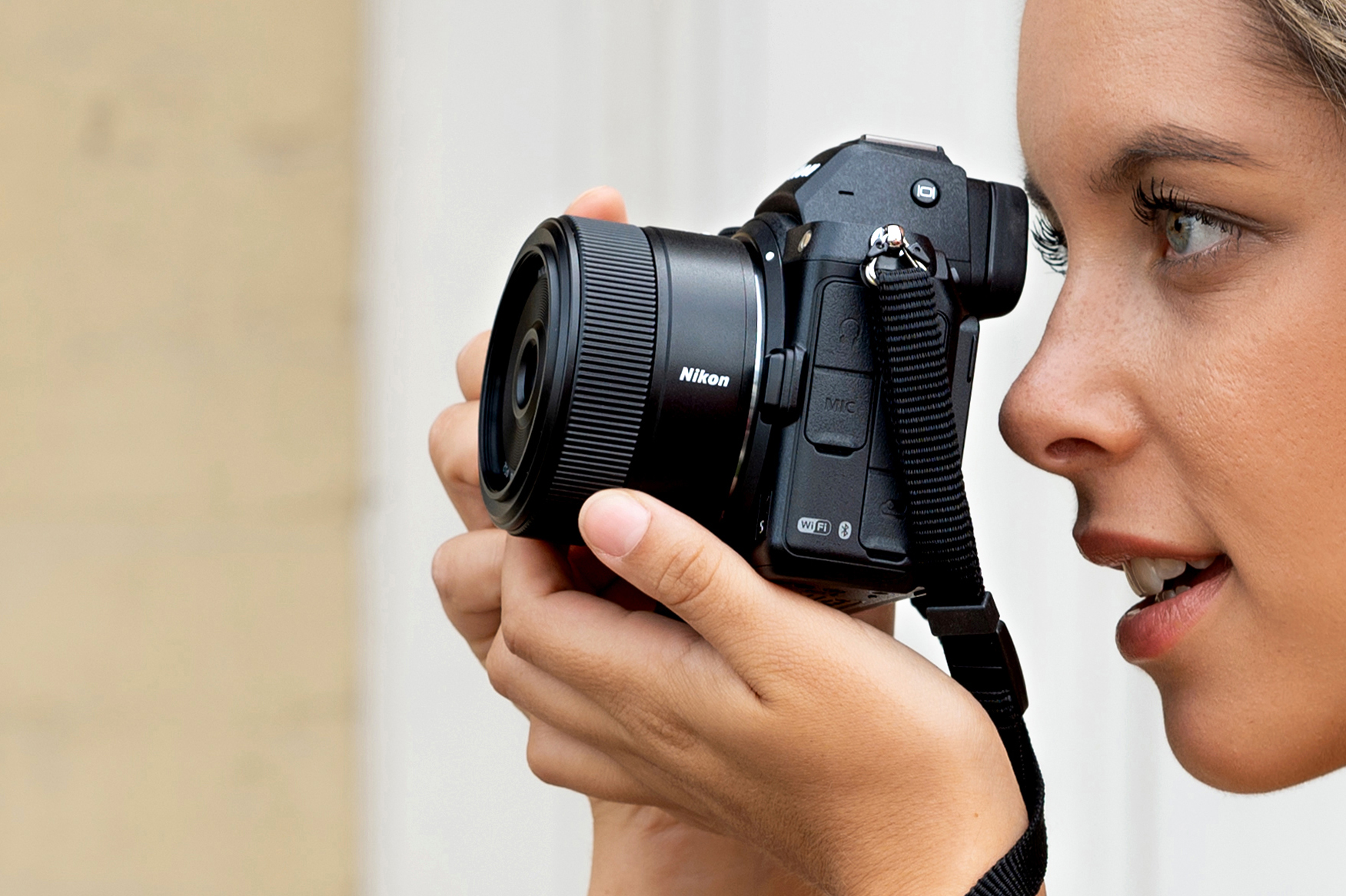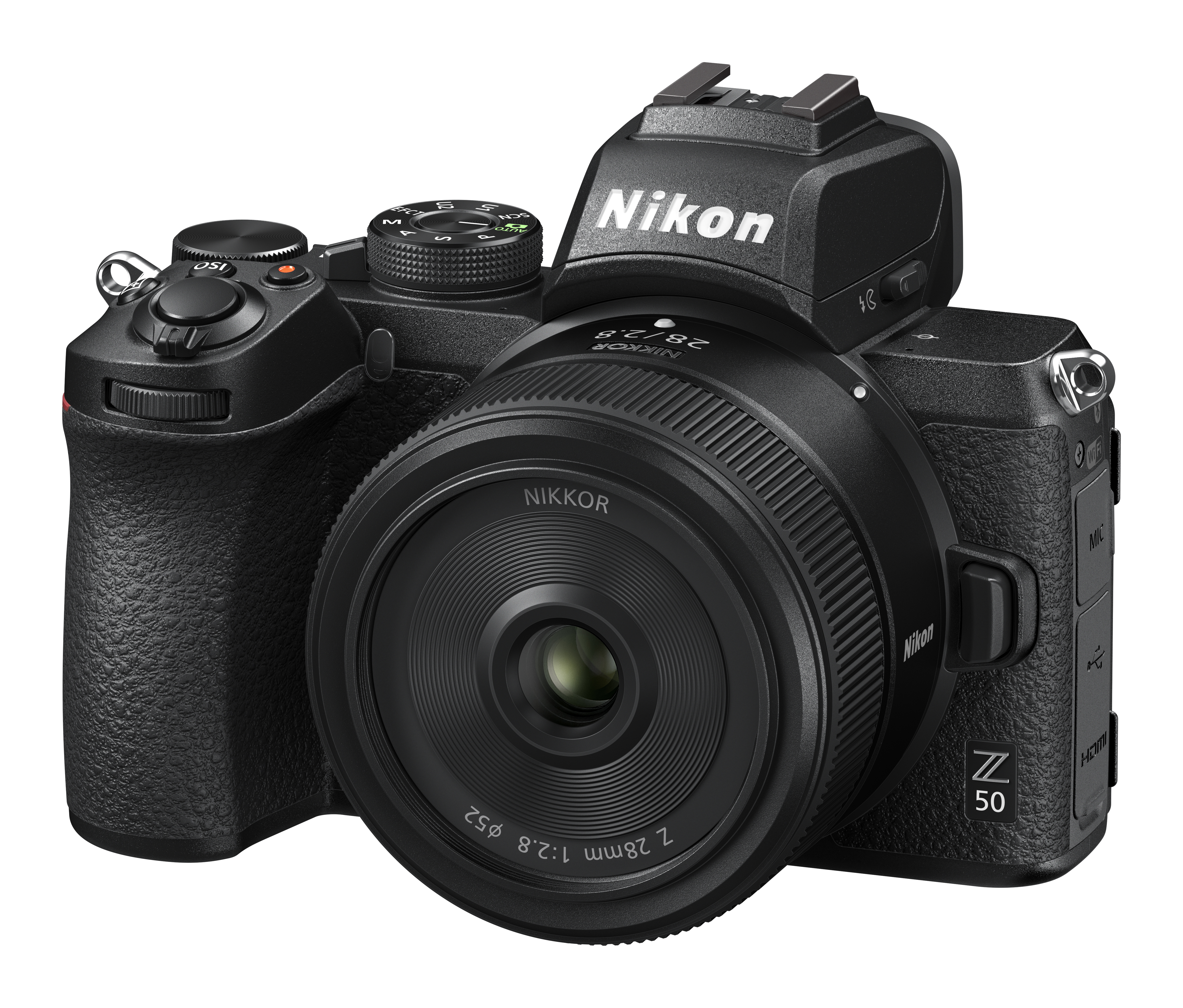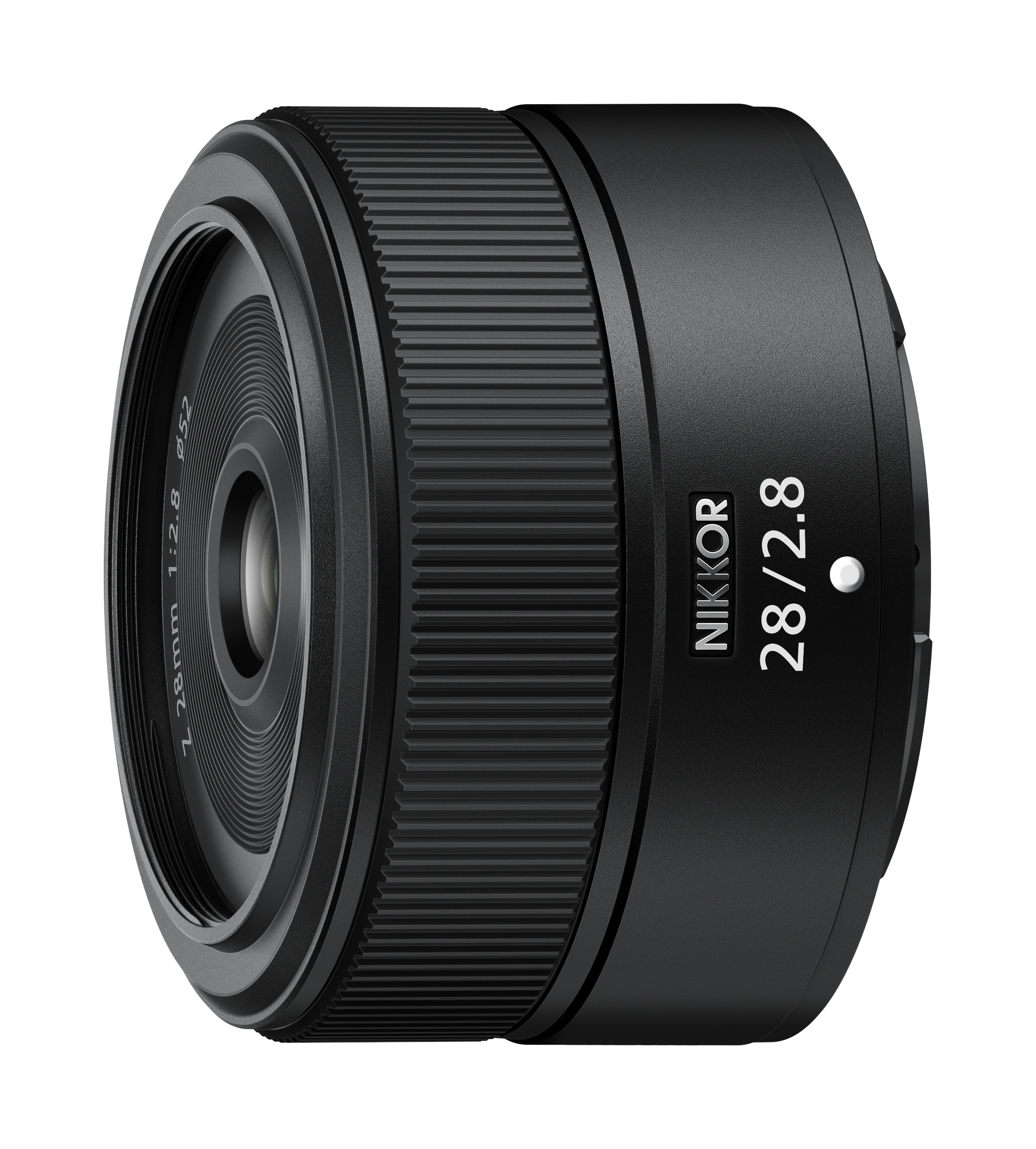Nikon’s ‘new’ Z 28mm f/2.8 is its smallest Z-mount prime yet
Originally launched as a kit lens alongside the Z fc, the svelte wide-angle prime is now available separately – and in black…

Nikon has announced that the Z 28mm f/2.8, a compact and lightweight prime lens for Nikon Z series cameras, will go on sale December 2021. However, while this is the first time it's been available standalone, it's not an entirely new lens – but essentially a pure-black version of the kit lens that launched alongside the retro-inspired Nikon Z fc, minus the silver band on the lens barrel.
With a total length of just 43mm and a weighing in at a mere 155g, it's the smallest and lightest own-brand Z prime lenses. And with a minimum focus distance of just 0.63 ft (0.19m), it's handy for close-up photography.
While its f/2.8 aperture isn't quite as fast as the f/1.8 rating typically found on Nikon's upmarket S-line primes, coming in at 1 1/3 stops slower, this does allow it to be be extremely compact, while still allowing good low-light performance and beautifully rendered bokeh.

The wide angle 28mm focal length is ideal for capturing everyday snapshots, group portraits, landscapes, cityscapes and more on a full-frame Z-series camera, while on an APS-C-sensor model this becomes an effective 42mm standard prime, and so will appeal to both FX and DX Nikon Z-series mirrorless users.
Adoption of a multi-focusing system realizes natural rendering across the entire shooting range, as well as fast and accurate AF control, while maintaining a smaller body size.
Functions such as aperture and exposure compensation, as well as the default manual focus, can be assigned to the control ring. The lens is sealed for dust and drip-resistant performance, enabling shooting with confidence in all manner of environments. And when it comes to video, the 28mm focal length is a cinematic classic, while the near-silent operation and minimal focus breathing ensure footage remains smooth.
The lens has a suggested retail price of $299.95 / £249.99 / AU$429.95.
Get the Digital Camera World Newsletter
The best camera deals, reviews, product advice, and unmissable photography news, direct to your inbox!
NIKKOR Z 28mm f/2.8 key details

Nikon lists the key features of the Z 28mm f/2.8 as follows:
Bright f/2.8 wide-angle lens: 28 mm focal length captures wide-angle shots with rich colour and contrast.
Ultra-portable: the lens is approx. 43 mm long and weighs in at approx. 155 g. Easily small enough to keep on the camera or slip into a coat pocket.
Beautiful bokeh: the wide Z mount and fixed f/2.8 rounded 7-blade aperture enable incredibly soft, natural-looking bokeh.
Superb up close: a minimum focus distance of 0.19 m allows users to focus sharply at close range.
Fast, silent AF: powered by an ultra-quiet stepping motor and enhanced by the additional light gathered by the Z mount, focusing is fast, accurate—and silent.
Great for video: Focus breathing is dramatically reduced so focus can be adjusted without affecting the shot's angle of view.
42 mm DX crop: offers a 42 mm angle of view when used with a DX-format Nikon Z camera.
Easy control: the silent control ring can be set to control focus, aperture, exposure compensation, or ISO.
Well protected: sealed for protection against dust and water droplets.
• Pre-order at Ted's Cameras (AU)
Read more
Best Nikon Z lenses
Best Nikon cameras
Best Nikon lenses
Nikon Z lens roadmap

Prior to joining digitalcameraworld.com as Guides Editor, Adam was the editor of N-Photo: The Nikon Magazine for seven years, and as such is one of Digital Camera World's leading experts when it comes to all things Nikon-related.
Whether it’s reviews and hands-on tests of the latest Nikon cameras and lenses, sharing his skills using filters, tripods, lighting, L brackets and other photography equipment, or trading tips and techniques on shooting landscapes, wildlife and almost any genre of photography, Adam is always on hand to provide his insights.
Prior to his tenure on N-Photo, Adam was also a veteran of publications such as PhotoPlus: The Canon Magazine, so his wealth of photographic knowledge isn’t solely limited to the Big N.
